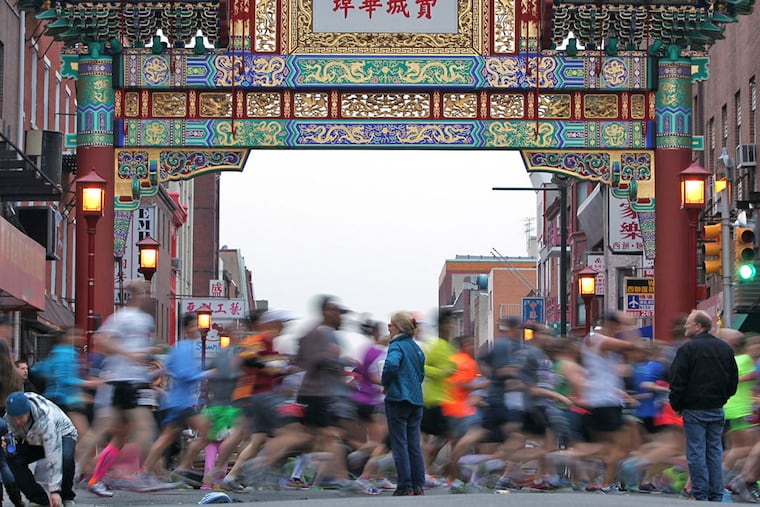Chinatown has had to fight to survive
With the recent 100th anniversary of the birth of preservationist Jane Jacobs, consider the history of one of the city's most iconic neighborhoods: Chinatown.

With the recent 100th anniversary of the birth of preservationist Jane Jacobs, consider the history of one of the city's most iconic neighborhoods: Chinatown.
Philadelphia is connected to one of the earliest instances of Sino-American relations. The 1784 journey of the ginseng-laden Empress of China to Canton (present-day Guangzhou) - the United States' first successful voyage to insular imperial China - was financed primarily by Philadelphian Robert Morris.
The beginning of the city's Chinatown is often traced to the early 1870s, with the opening of Lee Fong's laundry on Race Street's 900 block. Fong, like many Chinese, fled the Sinophobia coursing through the American West.
After readily welcoming Chinese laborers in the late 1860s to help expand the nation's rail network, Americans about-faced amid an economic slump. Then, as now, it became politically expedient to stoke the fear of underemployed and jobless Americans, pinning the blame on Chinese for the depressed wages and lack of work. Pogroms and other vigilantism followed.
Congress bested this ignorance with its 1882 Chinese Exclusion Act, the first significant law restricting immigration, with no room to mistake its intended target.
Further restrictions were placed on Chinese already living in the United States, creating "bachelor societies" in the cities, including Philadelphia, that many of them fled to from the Pacific coast.
The ensuing decades saw merchants and small-business owners establish themselves in the neighborhood generally hewing from Skid Row to the east and the "Tenderloin" district to the west. A community started to emerge, but not until the easing of immigration and citizenship restrictions, beginning in the 1940s, was Chinatown able to thrive as a center of Chinese culture and civic life.
This community solidarity was threatened again in the 1960s, this time by highways. A multitude of urban renewal plans for downtown Philadelphia, including the Vine Street Expressway, endangered Chinatown's integrity.
As initially proposed, the expressway would have made future growth almost impossible. Worse, the plan entailed the demolition of the Holy Redeemer Chinese Catholic Church, a neighborhood pillar.
These planned intrusions proved galvanizing, with the Save Chinatown movement gaining momentum throughout the 1970s and early 1980s. The movement was led by a coalition of groups, including the Chinese Benevolent Association, Philadelphia Chinese Development Corp., Holy Redeemer Catholic Church, and Yellow Seeds - a student organization.
"Save Chinatown" and "Homes Not Highways!" exhorted activists' placards. "Your Taxes at Work," ran the caption of a poster held by a young Chinatown resident, standing atop newly rendered rubble.
After two decades of negotiation, the community and city agreed in 1986 on a modified expressway plan, sparing the church and neighborhood.
"Just because the government says something is going to happen, it doesn't mean it has to happen," attested lawyer Gary Lee.
On Wednesday, join John Chin, Mary Yee, and Kathryn Wilson as they explore the unique history of the Chinatown neighborhood during the first of the Historical Society of Pennsylvania's free #SummerBookChats, "Ethnic Renewal in Philadelphia's Chinatown." Register at hsp.org/Chinatown.